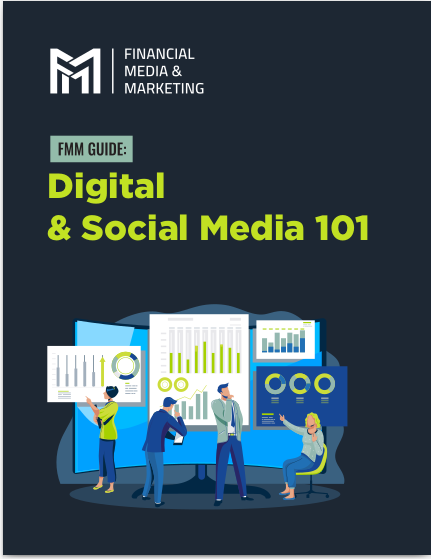Key Takeaways
-
Publishing your knowledge positions you as a thought leader and builds long-term professional credibility in a competitive 2025 landscape.
-
Strategic publishing doesn’t require writing books—it includes articles, whitepapers, research briefs, and digital content aligned with your expertise.
Why Publishing Still Matters in 2025
The way people perceive expertise is evolving. In 2025, your professional identity is no longer just built through credentials and job titles—it’s shaped by your visibility, consistency, and the insights you share. Publishing gives you a powerful tool to establish your reputation, not just within your industry but across the broader marketplace of ideas.
Being a published professional conveys authority. When your name is attached to high-quality content, whether it’s an industry blog, academic journal, or well-trafficked platform, it signals to peers, clients, and employers that your voice matters. This perception of credibility can influence hiring decisions, collaborations, and speaking invitations.
How Publishing Builds Authority
Creates a Public Track Record of Thought Leadership
When you publish consistently, you create a trail of knowledge that others can reference. Over time, this track record adds up to a recognized voice in your field. The more you share, the more you shape the narrative in your niche.
Strengthens Trust With Clients and Stakeholders
In 2025, trust is currency. Whether you’re a consultant, lawyer, engineer, or healthcare provider, clients and stakeholders look for signs that you understand your field deeply. Thoughtful publishing demonstrates not only your technical knowledge but your communication skills and foresight.
Sets You Apart From Competitors
Most professionals still do not publish. They may speak well or perform well, but they don’t leave a lasting footprint. If you are consistently contributing articles or whitepapers, you’re in a smaller group—and that distinction becomes your edge.
What You Can Publish (Beyond Books)
Not everyone has the time or desire to write a book, and that’s perfectly fine. In 2025, there are many ways to publish and build credibility:
-
Short-form articles: Great for sharing quick insights, especially on platforms where your audience already spends time.
-
Whitepapers: Ideal for more detailed explorations of complex issues in your industry.
-
Research briefs: Help break down new findings or data for others in your field.
-
Case commentaries: Provide your perspective on recent developments or decisions.
-
Slide decks or infographics: Condense information in a visual, digestible format.
Each of these formats allows you to share your expertise in ways that match your communication style and professional goals.
Where to Publish in 2025
With so many platforms available, choosing the right one depends on your audience and purpose. Consider these channels:
1. Professional Associations and Industry Portals
These outlets offer ready-made credibility. Publishing in a well-respected association journal or online portal gives you visibility with peers who matter most.
2. LinkedIn and Digital Platforms
LinkedIn continues to be a top publishing destination in 2025. Articles here gain organic reach and are indexed by search engines, helping you build a professional digital presence.
3. Niche Online Communities
Industry-specific blogs, forums, and knowledge hubs allow you to reach a highly targeted audience. These outlets often welcome guest content from credible voices.
4. Academic Journals and Research Publications
If you operate in a technical or scientific field, these journals still matter. They remain the gold standard for validated insights and deep exploration.
Crafting Content That Builds Credibility
It’s not just about writing—it’s about delivering value. Here’s how to make your content work for your reputation:
Focus on Relevance
Your audience in 2025 is overwhelmed with information. Make sure your content addresses their current challenges, anticipates trends, or offers frameworks for decision-making.
Prioritize Clarity Over Complexity
Don’t write to impress—write to communicate. Clear, accessible writing fosters more engagement, especially in technical or regulated fields.
Back Up Your Points
Use data, comparisons, or references to policies and practices. While you should avoid name-dropping companies or using citations, aligning your work with accepted standards or historical context adds weight.
Stay Consistent
A single article won’t establish you as an expert—but regular publishing over 6 to 12 months can. Consistency builds recognition, and recognition builds trust.
The Strategic Benefits of Publishing
Publishing isn’t just about exposure. It serves broader strategic goals:
Supports Career Growth
Professionals with a public knowledge portfolio often stand out in hiring processes, promotions, and board nominations. Hiring managers and decision-makers notice who contributes to the field.
Generates Lead Opportunities
Clients want to work with experts. When you publish, especially in spaces your clients frequent, you draw attention and interest—even without pitching.
Enhances Internal Reputation
Even within organizations, published professionals are seen as leaders. Your colleagues and executives notice when you contribute to industry discussions.
Prepares You for Speaking and Media Opportunities
Media outlets and event organizers look for individuals who have a voice. Your published content often becomes your audition tape.
How Often Should You Publish?
You don’t need to publish daily. In fact, spreading your contributions strategically over time creates more impact. In 2025, a realistic cadence is:
-
Once a month for long-form articles or whitepapers
-
Twice a month for short insights or commentaries
-
Quarterly for in-depth research pieces
This keeps you visible without overwhelming your schedule. Over the course of a year, that adds up to 12-30 substantial pieces that compound your professional credibility.
How Much Does It Cost to Publish?
Publishing can be cost-effective if you choose the right formats. Many platforms accept guest submissions without fees. If you opt for more formal research or design support, you might invest in:
-
Editing services to improve clarity and polish
-
Graphic design for visuals or infographics
-
Content planning tools to organize your pipeline
Budgeting a few hundred dollars per quarter for high-quality support can make your work more impactful. But the return—in influence, visibility, and professional opportunities—often outweighs the cost.
Avoiding Common Mistakes
Publishing is powerful when done correctly. In 2025, avoid these frequent missteps:
-
Being too promotional: Content should inform, not sell.
-
Neglecting your audience: Speak to what your audience needs—not just what you want to share.
-
Overloading with jargon: Even technical audiences appreciate plain, direct language.
-
Publishing once and disappearing: Momentum matters more than volume. Keep showing up.
Publishing Is an Investment in Your Reputation
Publishing in 2025 is no longer optional for professionals who want to stand out—it’s essential. It’s how you position yourself as a trusted expert, invite new opportunities, and shape the future of your field.
You don’t need to be a full-time writer to publish effectively. You just need a plan, a consistent rhythm, and a commitment to sharing insights that matter. Over time, your body of work becomes more than content—it becomes your legacy.
Your Expertise Deserves to Be Seen
There’s never been a better time to publish. As more professionals compete for recognition and clients become more discerning, your credibility hinges on visibility and substance. Publishing offers both.
Make it a goal in 2025 to share what you know, shape conversations, and show the world that your voice deserves to be heard. Your future self will thank you for investing in your credibility today.










